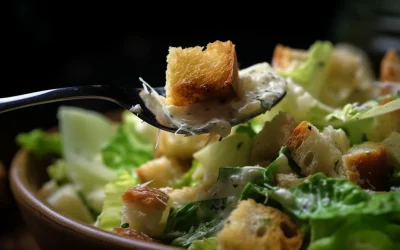Hungarian cuisine is a true treasure trove, rich in history and cultural diversity, where traditional dishes coexist with modern gastronomic trends. The versatility of Hungarian gastronomy is manifested not only in the variety of ingredients but also in the methods of preparation and the enjoyment of flavors. This is what we aim to present in the menu of the Nagy Fa-Tál Konyhája, where we strive to showcase the most characteristic Hungarian dishes.
1. Traditional hungarian dishes
Among the most renowned dishes of Hungarian cuisine are goulash, pörkölt (a type of stew), and lecsó (a vegetable dish). These dishes symbolize the hospitality of the Hungarian people and communal dining. Rich seasoning, such as paprika, cumin, and black pepper, is characteristic of the Hungarian flavor profile, often complemented by the perfect harmony of various meats and vegetables.

2. The diversity of hungarian desserts
Hungarian desserts, such as gubó (a type of sweet bread), túrós rétes (cottage cheese strudel), and Dobos cake, are also significant parts of our gastronomy. These sweets are not only delicious but often involve complicated preparation processes that reflect the traditions of Hungarian pastry-making. Natural ingredients like fruits, honey, and nuts often play a prominent role.

3. Regional specialties in Hungary
Distinct regional specialties have developed across Hungary's diverse landscapes. For example, the Great Plain is famous for its traditional sausages, while the dishes around Lake Balaton focus on fresh fish. The various regional cuisines enrich Hungarian gastronomy, allowing for the exploration of a multitude of flavors. One of the beauties of Hungarian cuisine is that the same dish can be prepared differently in different regions, adding color to this culinary journey.
4. Modern hungarian gastronomy
Modern Hungarian cuisine is continuously evolving, with some chefs reinterpreting classic dishes using fresh and local ingredients. The creative dishes available in fine dining restaurants reflect international gastronomic trends while preserving the essence of Hungarian traditions. Reimagined dishes, such as fusion cuisine, open new dimensions in Hungarian gastronomy. It's particularly special when a completely traditional Hungarian dish, like lecsó or túrós csusza (cottage cheese noodles), is rethought by master chefs, retaining its components but changing the concept and presentation to create what feels like an entirely new dish while preserving its flavor profile újragondolt fogások, mint például a fúziós konyha, új dimenziókat nyitnak meg a magyar gasztronómiában. Rendkívül különleges például mikor egy teljesen hagyományos, klasszikus magyar ételt gondolnak újra mesterszakácsok, mint például egy lecsó vagy egy túrós csusza, megtartva azok alkotóelemeit, csak a koncepción változtatnak és a tálalás után mintha egy teljesen más ételt alkottak volna, mégis megtartva annak ízvilágát.
5. Vegetarian and vegan alternatives in the hungarian cuisine
Healthy versions of Hungarian cuisine have also emerged, with vegetarian and vegan diets gaining popularity. Dishes made from vegetables, legumes, and fruits offer diverse and delicious alternatives for those who wish to avoid meat consumption. The versatility of Hungarian cuisine lies in its respect for tradition and its openness to innovation. The dishes not only nourish us but also connect us, evoke the past, and provide new experiences.












